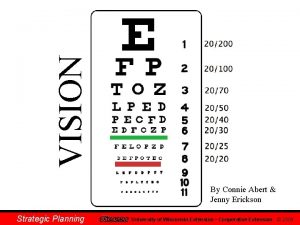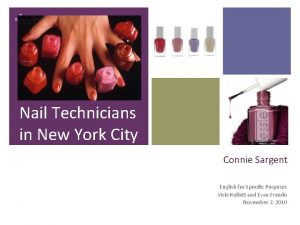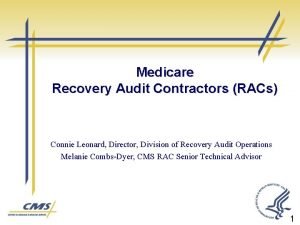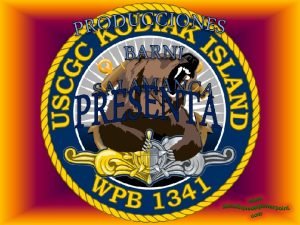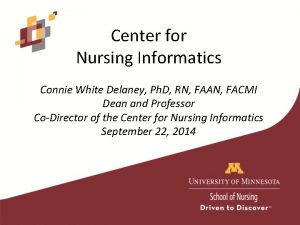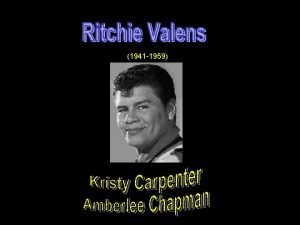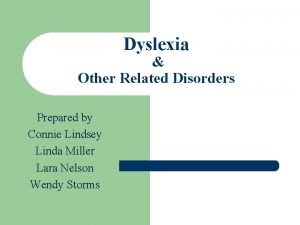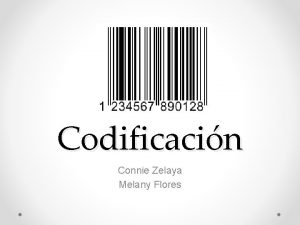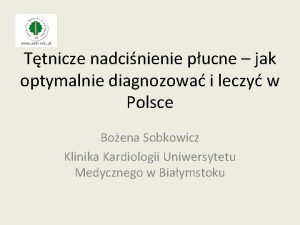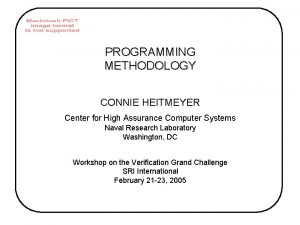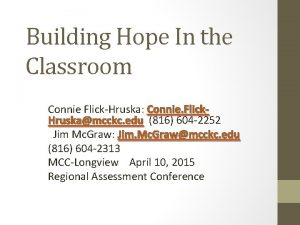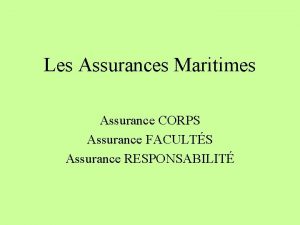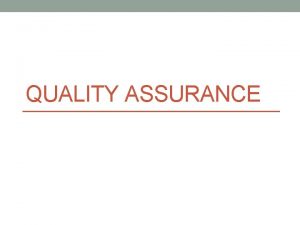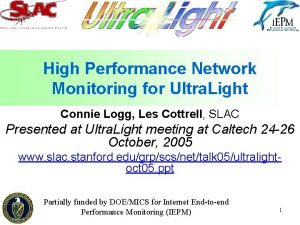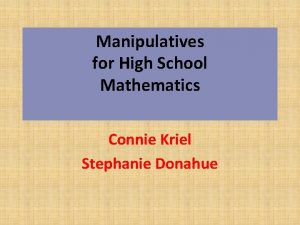APPLICATIONS CONNIE HEITMEYER Center for High Assurance Computer












- Slides: 12

APPLICATIONS CONNIE HEITMEYER Center for High Assurance Computer Systems Naval Research Laboratory Washington, DC Workshop on the Verification Grand Challenge SRI International February 21 -23, 2005

APPLICATIONS TO PRACTICAL SYSTEMS • • In May 2004, NASA Ames recommended the SCR tools for “improving software development practice at NASA” Three applications of SCR to NASA applications (recently) – Fault Protection Engine, a software module present in current spacecraft and software currently under development for future spacecraft (Jet Propulsion Lab) – Failure Detection, Isolation & Recovery in Thermal Radiator Rotary Joint Manager Subsystem for the Intern. Space Station (with NASA IV&V Fac. ) – Incubator Display software for the Space Station’s Fundamental Space Biology Mission • 9/24/03 • with NASA Ames Research Center/Intrinsyx Tech. Corp. (to begin in March 2005) Application of TAME (some SCR) to the verification of the separation kernel of a software-based cryptographic device 2

Applying SCR to the Fault Detection, Isolation and Recovery (FDIR) Module of the Thermal Radiator Rotary Joint Manager (NASA’s Internat. Space Station) SPECIFICATION EDITOR software requirements specification modes terms CONSISTENCY CHECKER cont vars mon vars conditions events SIMULATOR

APPLYING SCR TO THE FDIR MODULE (NRL AND NASA IV&V FACILITY) • • • System purpose: If certain events occur in a given mode, – Output a failure notification and/or – Sound one of two different alarms Our task: Use SCR tools to detect and correct defects in existing requirements documentation Available resources – Existing requirements documents • • Tabular description of required software behavior Finite state diagram of modes and events triggering mode transitions – Domain expert 9/24/03 4

EXAMPLE: APPLYING SCR TO THE FDIR MODULE Original requirements document • no explicit semantics • cannot check mech’ly ID Failure Condition Failure Detection Phase Failure Criteria Persistence Failure Notif. Recovery Response Inhibit 1 a Failure to Autotrack Mode Pos. Err >= Thresh Autotrack_Err Pers Autotrack Failure CWA Autotrack or Joint Failure Transition To Switchover Mode NOT Inhibit String Autotrack Resp 1 b Failure to Autotrack Mode Pos. Err >= Thresh Autotrack_Err Pers Autotrack Failure CWA Autotrack or Joint Failure 1 Send Power. Off to SEPS 2 Trans. to Checkout Mode Inhibit String Autotrack Resp … … … … 5 Blind Op Timeout exceeded Blind Mode & Motor. Comm & Status is Torque Motor On Blind Op Time Dur > Thresh Autotrack_ Err None CWA Time Limit Blind Ops Trans. to Shutdown Mode Inhibit Time Limit Blind Ops Resp SCR requirements specification • well-defined semantics • can apply tools 9/24/03 Source Mode Event Dest. Mode Blind @T(Blind_Ops_Timeout_Exceeded) WHEN (Motor_Comm_AND_Status_Torque_Motor_On AND NOT Inhibit_Time_Limit_Blind. Ops_Resp) Shutdown Autotrack @T(Pers_Autotrack_Failure_Exceeded) WHEN NOT Inhibit_String_Fail_Autotrack_Response Switchover Autotrack @T(Pers_Autotrack_Failure_Exceeded) WHEN Inhibit_String_Fail_Autotrack_Response Checkout 5

LESSONS LEARNED • • • While its semantics were implicit, the requirements documentation for the FDIR module was a good basis for developing the SCR requirements spec – The domain expert, a NASA contractor, told us how to interpret the tables and helped us fill in missing information The original tabular spec already referred to several system modes and described transitions between modes – Hence, there was no need for us to “discover” the important system modes The process of translating (some of) the requirements into an SCR requirements spec exposed two serious errors in less than one week’s time – The action required in two modes had been erroneously switched – The spec contained undesirable implementation bias While tools did not detect these errors, the tools did help us (consistency checking and simulation) in debugging the SCR spec that we constructed We subsequently taught a 2 1/2 day course on the SCR method and tools Based on our experience in teaching the course and subsequent experience working with NASA contractors, it is clear that learning to develop high quality specs is very difficult This is an example where the original tabular notion could be maintained and the SCR tools used “under the hood” to expose defects 9/24/03 6

APPLYING TAME/SCR TO THE SEP. KERNEL OFCD II, A MEMBER OF A FAMILY OF SOFTWARE-BASED CRYPTO SYSTEMS

CD FAMILY OF CRYPTOGRAPHIC DEVICES encrypt decrypt C D To: …… From: …… Subj: ISR Assets ………… C D comm. system CD SERVICES Each member is implemented in handware and software 9/24/03 • • • Load and remove crypto algorithms and keys Configure a channel with an algorithm and a key Encrypt and decrypt data on a channel Take emergency action when, e. g. , device is tampered with Provide the above services for m channels CD: Cryptographic Device 8

WHAT SECURITY POLICY MUST CD II SATISFY? CD II CHANNEL i process ded’d for memory data encrypt/ for decrypt channel i on channel i SHARED 2 process for shared storing memory Channel shared for algorithms algs/keys and keys Red arrows show data flows that violate separation CHANNEL j process ded’d for memory data for encrypt/ decrypt channel j on channel j 3 1 SECURITY POLICY: ENFORCE DATA SEPARATION Data on channel i is not influenced by data on channel j and vice versa 9/24/03 9

HOW TO OBTAIN ASSURANCE THAT CD II ENFORCES SEPARATION? DEDICATED channel i SHARED DEDICATED channel j SEPARATION KERNEL SHARED COMMANDS CHANNEL COMMANDS SOLUTION: IMPLEMENT A “SEPARATION KERNEL” TO MEDIATE EVERY ACCESS TO MEMORY* The function of the Separation Kernel is to prevent illegal data flows. *John Rushby, “Design and verification of secure systems, ” Proc. 9/24/03 8 th Symp. on Operating System Principles, Pacific Grove, CA, Dec. , 1981. 10

OBTAINING A HIGH ASSURANCE SEPARATION KERNEL SECURITY POLICY MODEL Prove ABSTRACT SPEC satisfies model ABSTRACT SPEC: spec of security-relevant behavior ? Show that CONCRETE SPEC correctly implements the ABSTRACT SPEC CONCRETE SPEC: spec of security-relevant code • • • Develop a formal SECURITY POLICY MODEL to describe the CD II notion of data separation Produce ABSTRACT SPEC--a formal spec of the behavior of the CD II separation kernel (Use the style of [1]) Prove that the ABSTRACT SPEC satisfies the SECURITY POLICY MODEL Produce CONCRETE SPEC-- a formal spec of the CD II implementation of the separation kernel Prove that the CONCRETE SPEC refines the ABSTRACT SPEC. Show that the CD II code (i. e. , the implementation) satisfies the CONCRETE SPEC Show that the CODE corresponds to the CONCRETE SPEC security-relevant CODE [1] Landwehr, Heitmeyer, Mc. Lean, ACM TOCS , 1984. 9/24/03 TAME TOOL SUPPORT CODE WALK-THROUGH 11

LESSONS LEARNED • • 9/24/03 Determining the precise meaning of data separation (e. g. , what does “influence” mean) was challenging Even more challenging was determining the separation-relevant behavior of the separation kernel – Determining the intended behavior of the kernel was hard Useful mechanism for eliciting requirements -- scenarios – The SCR simulator was useful in constructing and debugging the spec that determines the kernel’s response to each input in the scenario Hard part is the code verification -- e. g. , demonstrating the correctness of the functions the kernel performs (e. g. , loading the appropriate entry from the access matrix, properly performing sanitization) 12

